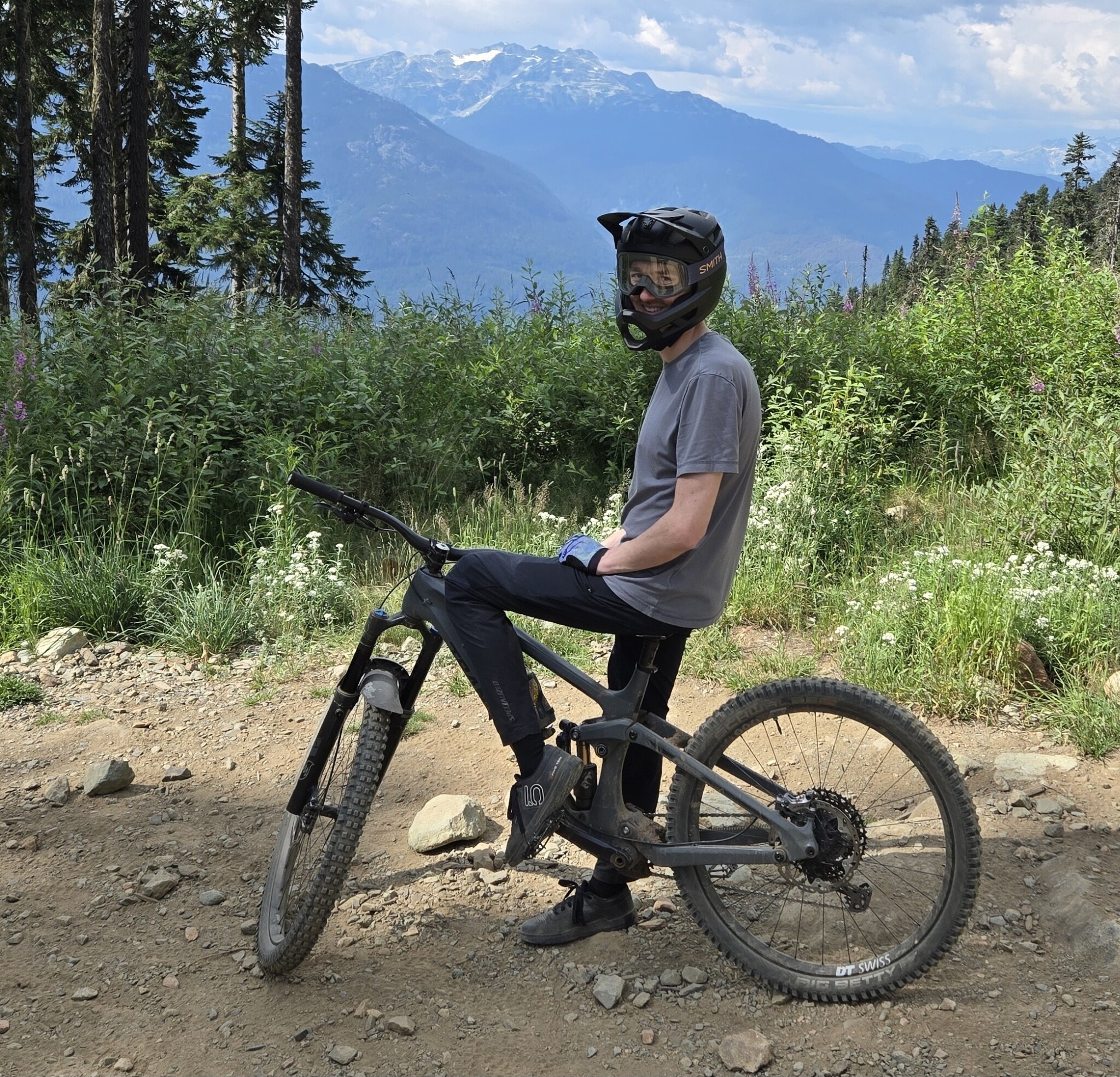Carbon vs aluminum bikes
- Posted on
- By Steve Guppy
- Posted in carbon vs aluminum mountain bike, Transition Patrol review

One of the most common questions we get in the shop is: Carbon vs. Aluminum bike—what's the difference, and which is better?
Carbon vs Aluminum: Transition Patrol Comparison (And What It Means for Other Bikes)
One of the most common questions we get in the shop is: Carbon vs. Aluminum bike—what's the difference, and which is better?
After riding the Transition Patrol Alloy for a couple of seasons and switching to the carbon version for the past year, I’ve had the chance to compare them head-to-head.
This comparison isn’t just relevant to the Patrol—it’s applicable to most enduro and trail bikes, whether you’re considering a Marin Alpine Trail or a Rocky Mountain Altitude.
Main Differences Between Carbon and Aluminum Bikes
When comparing carbon and aluminum frames, you’ll often consider:
- Cost
- Weight
- Strength
- Flex/Comfort
While carbon frames tend to be lighter and more flexible, I’ve always believed that better components—like high-quality suspension and brakes—can be more important than a carbon frame.
This applies to many popular bikes, whether you’re looking at the Marin Headlands or the Rocky Mountain Slayer. Once you’ve upgraded to top-tier components, that’s when the conversation about carbon begins.
Weight and Handling: My Experience with Carbon
When I made the switch to the Transition Patrol Carbon, I also upgraded a few other parts, moving from XT to XTR. This resulted in additional weight savings, taking my bike from around 38 lbs (including pedals, tools, and a bottle cage) to 34 lbs.
I wasn’t expecting a huge difference—but the trails had a surprise in store for me. On my first ride, I hit a decent-sized jump, only to find myself in a huge nose-dive! Having swapped the shock from my alloy bike, all the settings were the same, but the lighter frame behaved very differently in the air. I hadn’t anticipated just how much the weight distribution would change the way the bike moved.
Once I adjusted to the new feel, the bike became incredibly playful. The lighter weight gave me more "pop" off jumps, making it easier to clear gaps, especially when I came into features a bit slower than expected.
I also noticed the difference when leaning into tight back-to-back berms. The carbon version felt easier to lean and pick back up, offering a more playful and responsive ride in these scenarios.
This same shift in handling can be felt across brands. Riders upgrading from an aluminum Rocky Mountain Altitude to the carbon version may notice a similar improvement in agility, especially on jumps. The lighter weight in the air allows for better "pop" and makes it easier to clear gaps or features—just as I experienced on my Patrol.
Climbing: Carbon or Aluminum?
When it comes to climbing, I did notice an improvement with the carbon Patrol, thanks to the reduced weight. The lighter frame made the bike feel more efficient and easier to handle on long, steep climbs. While my aluminum Patrol wasn’t bad uphill, the carbon version provided a noticeable advantage, especially when pedaling through technical uphill sections where every bit of weight reduction counts.
This applies to many bikes, like the Marin Rift Zone or the Rocky Mountain Instinct—where the lighter carbon frames can make climbing feel less laborious. While the biggest improvements in climbing efficiency still come from geometry and suspension design, the reduction in weight from a carbon frame can provide that extra boost to make ascents a bit easier.
Durability and Comfort: Strength and Flex Considerations
While carbon frames offer more flex and can help absorb trail vibrations, aluminum frames are generally more rigid and durable. This is a common theme across brands, whether you’re looking at the Marin Alpine Trail or the Rocky Mountain Slayer.
Riders who prioritize long-term durability and crash resistance might prefer aluminum, while those focused on a smoother ride might lean toward carbon.
Which Version is Right for You?
The Transition Patrol is a fantastic bike, but the decision between carbon and aluminum applies to nearly every major brand’s lineup. If you’re looking at bikes like the Rocky Mountain Altitude or the Marin Alpine Trail, the choice comes down to personal preference:
- If you want a lighter, more playful ride with better responsiveness in technical sections, carbon might be the way to go.
- If you prefer a more affordable, durable option, aluminum will serve you well, without sacrificing too much performance.
Conclusion
The comparison between carbon and aluminum isn’t exclusive to the Transition Patrol. Whether you’re looking at bikes from Marin or Rocky Mountain, the principles remain the same.
Carbon frames offer a lighter, more agile ride, while aluminum frames provide durability and a more cost-effective solution. No matter the brand, your decision will depend on your priorities—whether it's weight, cost, or how playful you want your ride to feel.
https://www.rockycycle.com/blogs/rocky-cycle-blog/2022-transition-patrol-long-term-staff-review/
